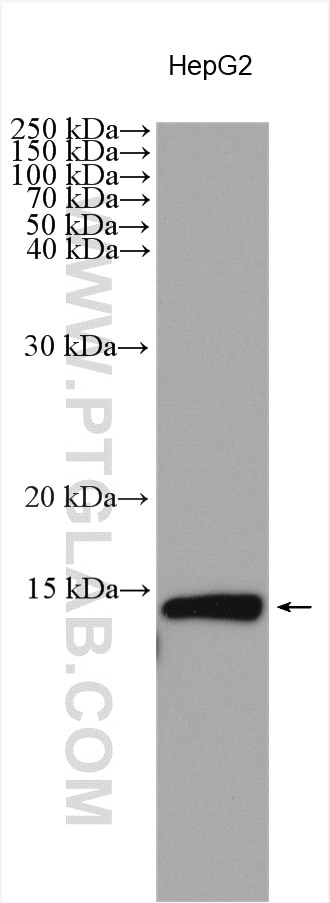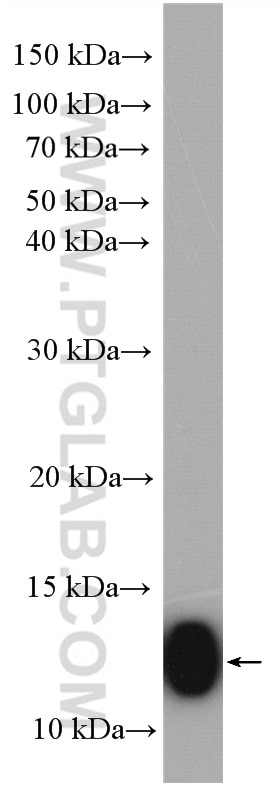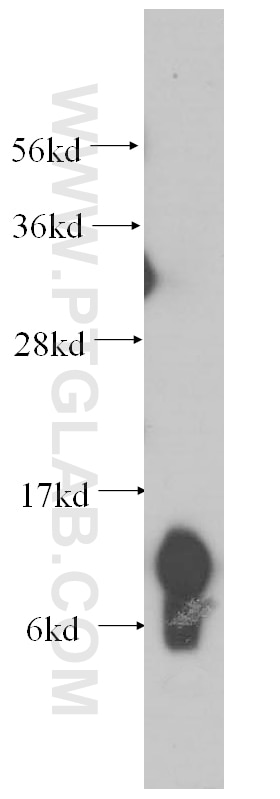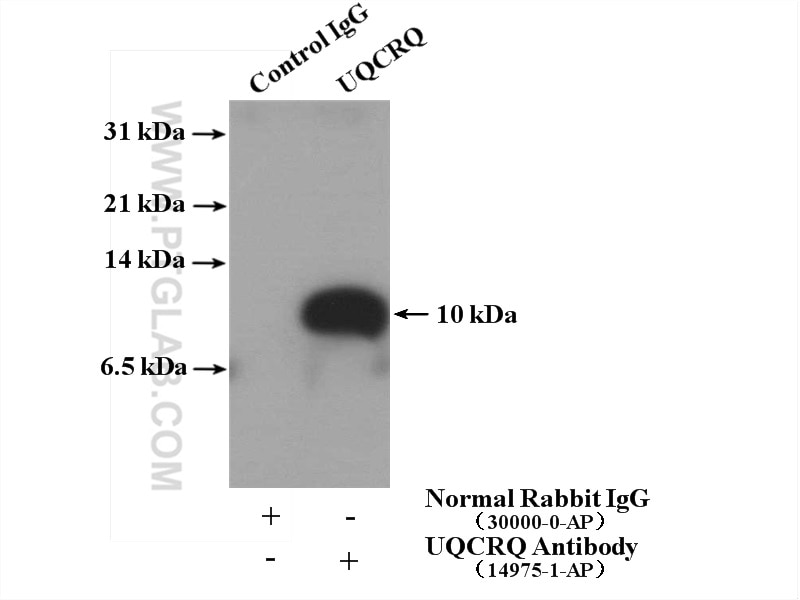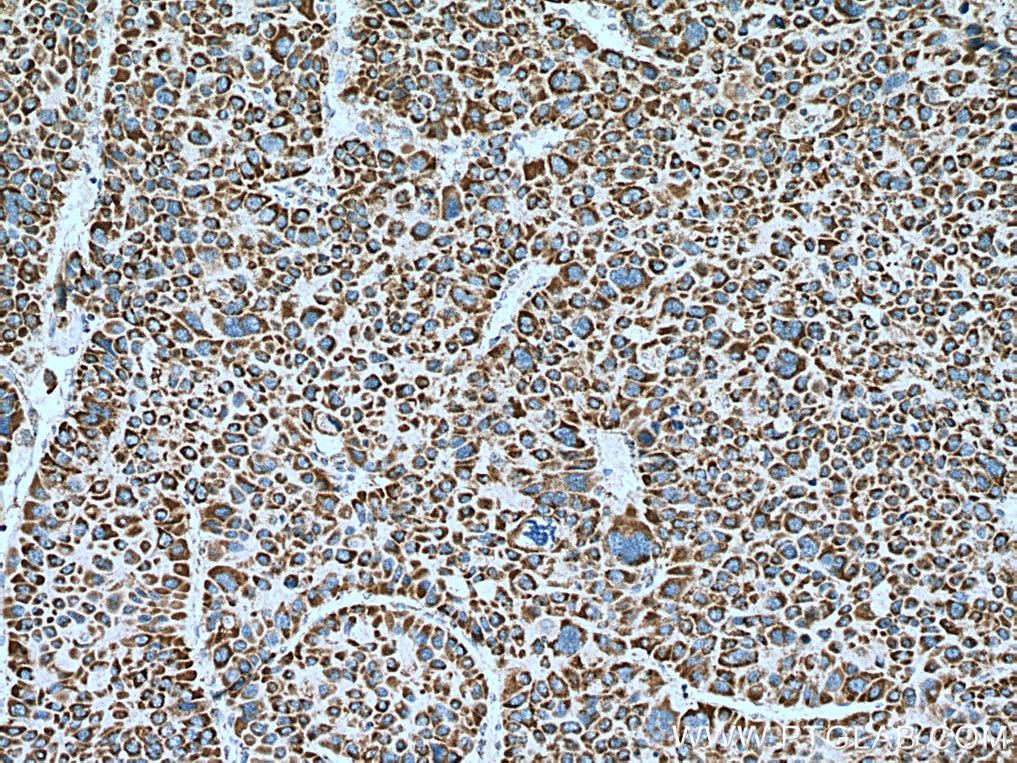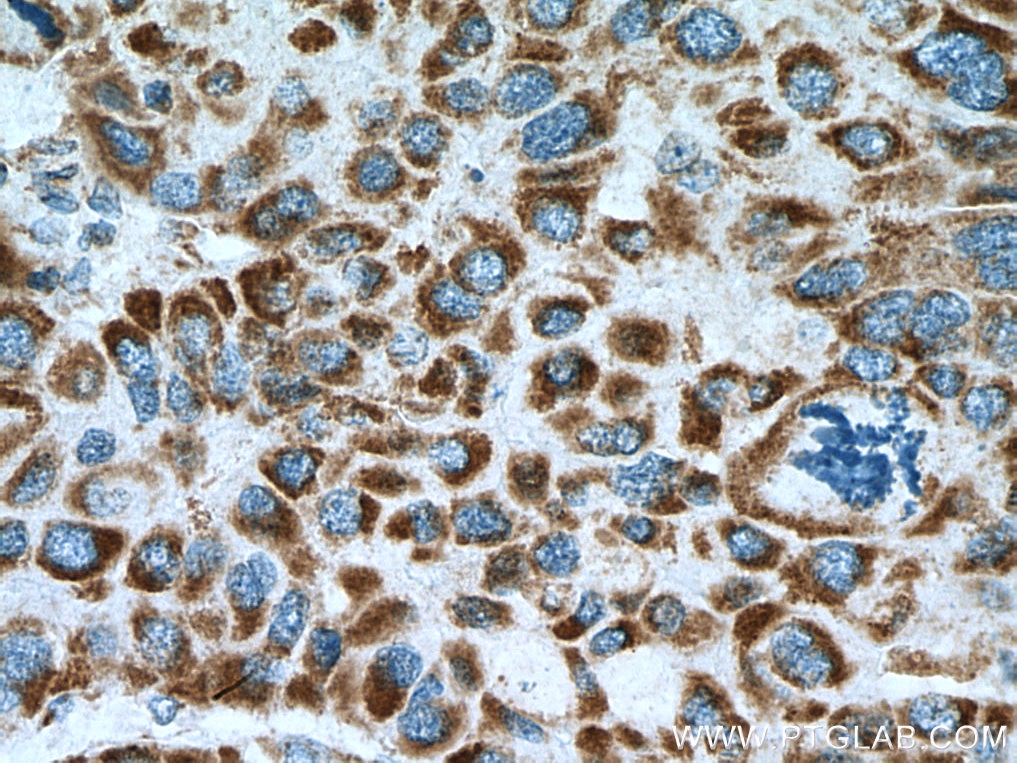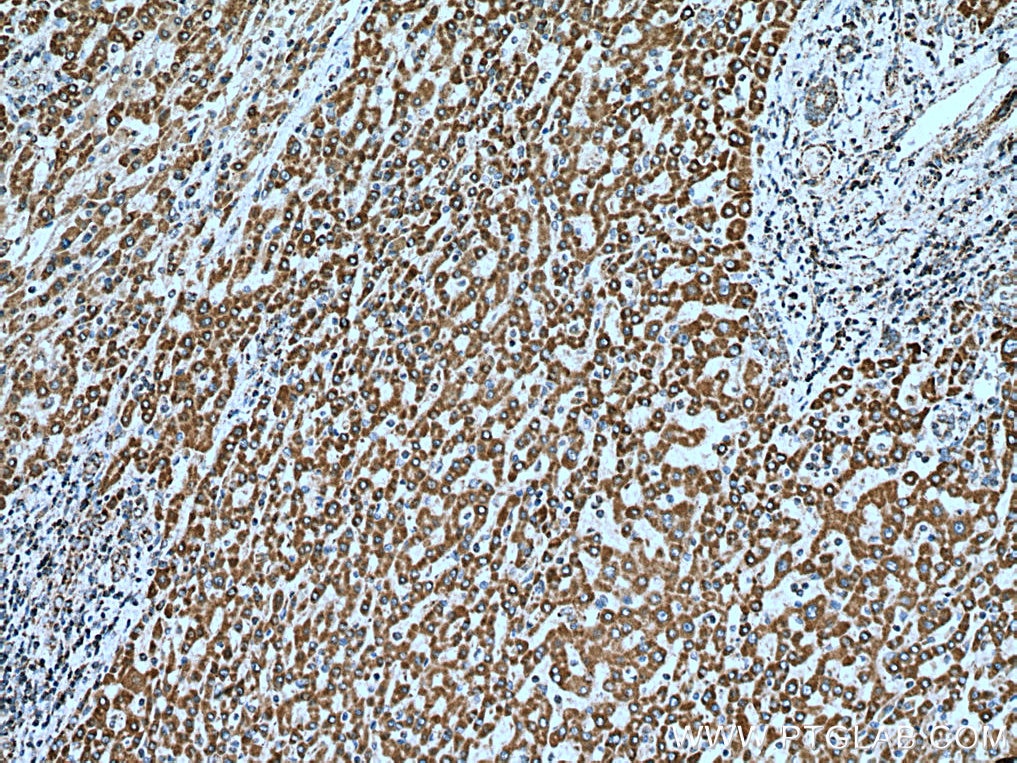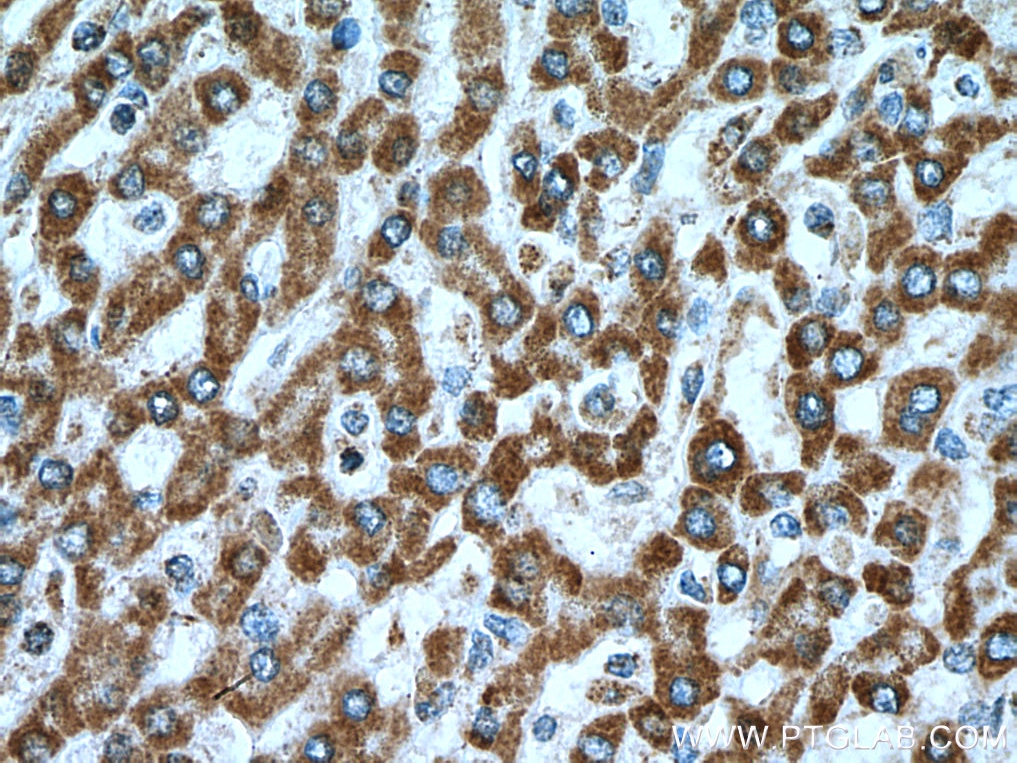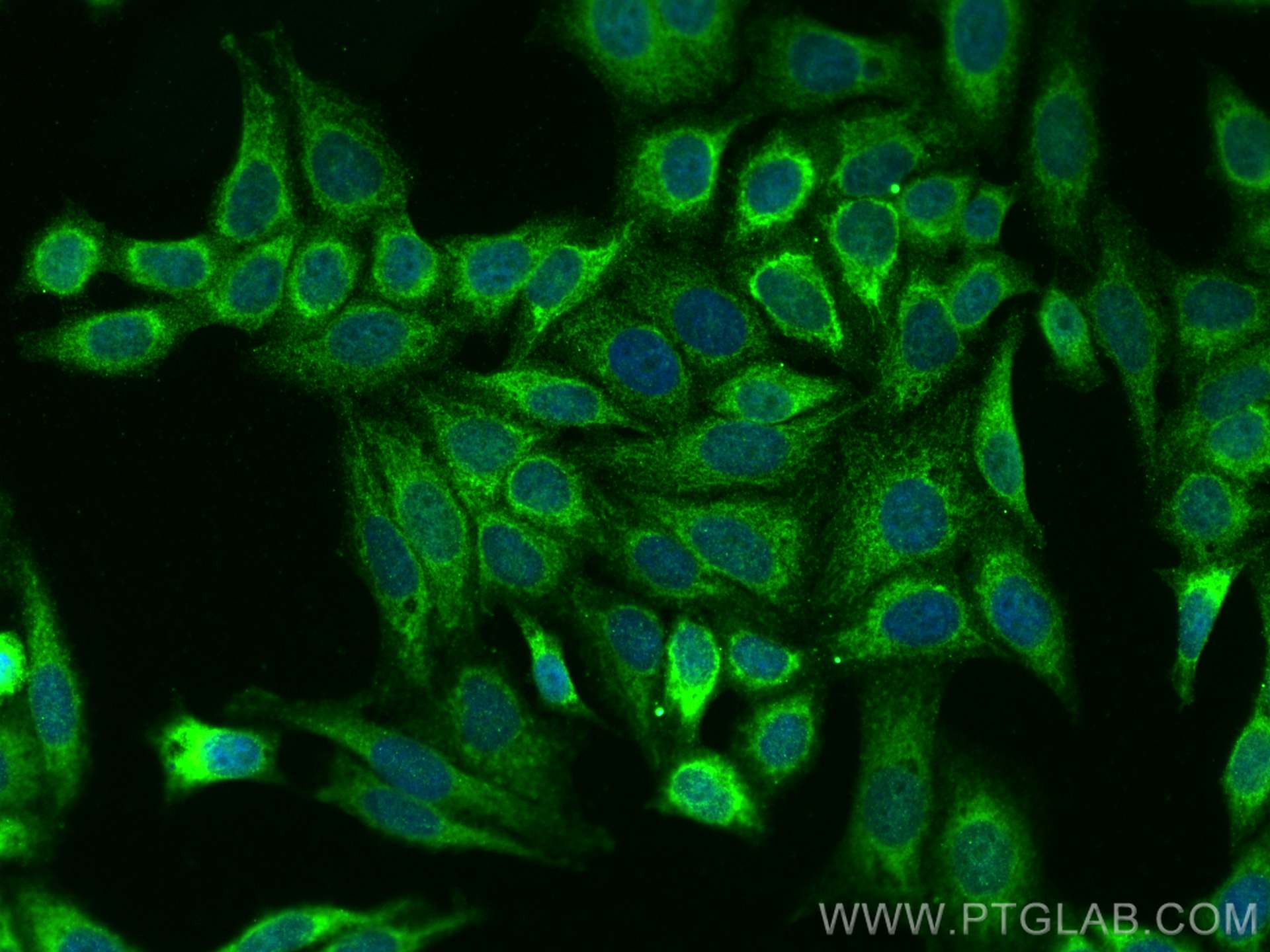- Phare
- Validé par KD/KO
Anticorps Polyclonal de lapin anti-UQCRQ
UQCRQ Polyclonal Antibody for WB, IHC, IF/ICC, IP, ELISA
Hôte / Isotype
Lapin / IgG
Réactivité testée
Humain, rat, souris
Applications
WB, IHC, IF/ICC, IP, ELISA
Conjugaison
Non conjugué
N° de cat : 14975-1-AP
Synonymes
Galerie de données de validation
Applications testées
| Résultats positifs en WB | cellules HepG2, tissu hépatique humain |
| Résultats positifs en IP | cellules HepG2, |
| Résultats positifs en IHC | tissu de cancer du foie humain, il est suggéré de démasquer l'antigène avec un tampon de TE buffer pH 9.0; (*) À défaut, 'le démasquage de l'antigène peut être 'effectué avec un tampon citrate pH 6,0. |
| Résultats positifs en IF/ICC | cellules HepG2, |
Dilution recommandée
| Application | Dilution |
|---|---|
| Western Blot (WB) | WB : 1:500-1:3000 |
| Immunoprécipitation (IP) | IP : 0.5-4.0 ug for 1.0-3.0 mg of total protein lysate |
| Immunohistochimie (IHC) | IHC : 1:50-1:500 |
| Immunofluorescence (IF)/ICC | IF/ICC : 1:50-1:500 |
| It is recommended that this reagent should be titrated in each testing system to obtain optimal results. | |
| Sample-dependent, check data in validation data gallery | |
Applications publiées
| KD/KO | See 1 publications below |
| WB | See 9 publications below |
Informations sur le produit
14975-1-AP cible UQCRQ dans les applications de WB, IHC, IF/ICC, IP, ELISA et montre une réactivité avec des échantillons Humain, rat, souris
| Réactivité | Humain, rat, souris |
| Réactivité citée | rat, Humain, souris |
| Hôte / Isotype | Lapin / IgG |
| Clonalité | Polyclonal |
| Type | Anticorps |
| Immunogène | UQCRQ Protéine recombinante Ag6886 |
| Nom complet | ubiquinol-cytochrome c reductase, complex III subunit VII, 9.5kDa |
| Masse moléculaire calculée | 10 kDa |
| Poids moléculaire observé | 10 kDa |
| Numéro d’acquisition GenBank | BC001390 |
| Symbole du gène | UQCRQ |
| Identification du gène (NCBI) | 27089 |
| Conjugaison | Non conjugué |
| Forme | Liquide |
| Méthode de purification | Purification par affinité contre l'antigène |
| Tampon de stockage | PBS with 0.02% sodium azide and 50% glycerol |
| Conditions de stockage | Stocker à -20°C. Stable pendant un an après l'expédition. L'aliquotage n'est pas nécessaire pour le stockage à -20oC Les 20ul contiennent 0,1% de BSA. |
Informations générales
UQCRQ(Cytochrome b-c1 complex subunit 8) belongs to the UQCRQ/QCR8 family. UQCRQ is a ubiquinone-binding protein localized to the cytochrome bc1 region of the mitochondrial respiratory chain. The deduced 110-amino acid protein has a relatively hydrophobic and basic N-terminal region, an aspartic acid-rich middle region, and a glutamic acid- and lysine-rich C-terminal region.
Protocole
| Product Specific Protocols | |
|---|---|
| WB protocol for UQCRQ antibody 14975-1-AP | Download protocol |
| IHC protocol for UQCRQ antibody 14975-1-AP | Download protocol |
| IF protocol for UQCRQ antibody 14975-1-AP | Download protocol |
| IP protocol for UQCRQ antibody 14975-1-AP | Download protocol |
| Standard Protocols | |
|---|---|
| Click here to view our Standard Protocols |
Publications
| Species | Application | Title |
|---|---|---|
Int J Mol Sci Deficiency of T-Cell Intracellular Antigen 1 in Murine Embryonic Fibroblasts Is Associated with Changes in Mitochondrial Morphology and Respiration. | ||
Stem Cells The Transcription Factor 7-Like 2-Peroxisome Proliferator-Activated Receptor Gamma Coactivator-1 Alpha Axis Connects Mitochondrial Biogenesis and Metabolic Shift with Stem Cell Commitment to Hepatic Differentiation. | ||
Cell Death Dis Calcium sensing receptor protects high glucose-induced energy metabolism disorder via blocking gp78-ubiquitin proteasome pathway. | ||
J Biol Chem Mitochondrial reactive oxygen species regulate transforming growth factor-β signaling.
| ||
Am J Physiol Endocrinol Metab Exogenous H2S reduces acetylation levels of mitochondrial respiratory enzymes via regulating NAD+-SIRT3 pathway in cardiac tissues of db/db mice. | ||
Front Endocrinol (Lausanne) The Impaired Bioenergetics of Diabetic Cardiac Microvascular Endothelial Cells. |
